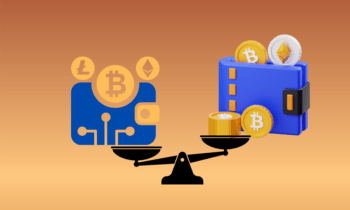What are non-fungible tokens, and how do they work? How do NFTs work? These are very common questions many people are asking since NFTs have exploded in popularity over the past few years. What are NFTs, and how are they different from cryptocurrency? Unfortunately, there seems to be a lot of confusion about this question.
What are NFTs?
NFT stands for non-fungible token. Cryptocurrency can be used in many different mediums to buy and sell products. For example, in the Web 3.0 world, NFTs are often sold and paid for with cryptocurrency.
The “fungible” in non-fungible refers to an object’s ability to be traded for one another. For example, cryptocurrency and real fiat currencies are fungible because they can be exchanged for one another. For instance, one dollar can be traded for another dollar.
All NFTs are unique and have their own digital identity. They can be bought, sold, and traded under the presumption of having equal value, but this does not mean they are interchangeable. Every NFT is unique and must be treated as such.
What Do NFTs Do?
In practice, NFTs are often digital assets like artwork, music, or in-game purchases. Users can use cryptocurrencies to purchase NFTs, and the NFT’s utility stems from its ability to be implemented in many different online arenas. Many artists and musicians, for instance, have been using NFTs to sell their work, creating a new digital art world and giving creators the power to control how their art is valued, bought, and sold.
NFTs have also been used for the verification of in-game purchases. This is another reasonably new use case for NFTs, but this has been very useful in many Web 3.0 metaverse games. Metaverse games have used NFTs to allow people to purchase items in the game, track their purchases, and independently verify them. So, if you are playing a metaverse game and buying land as an NFT, you will own land in that metaverse and have the proper verification to show it.
NFT Verifications
One of the most significant advantages of NFTs that have made them so popular is that NFTs can very quickly be verified because of how their transactions are recorded. NFTs, like just about everything else in Web 3.0 and the metaverse, are built and stored on the blockchain. Because of this, every transaction that occurs with an NFT has public records that anyone with access can verify. Therefore, the blockchain is a big part of how NFTs are built. Many NFTs are built on the Ethereum blockchain, but recently, more has been built on other blockchains.
What Can Be An NFT?
What exactly can be an NFT? Practically anything can be an NFT. If it’s digital and uploaded to the blockchain, a file has the potential to become an NFT. Artwork and images are generally the most popular NFTs.
Musicians have also begun selling their music as NFTs. Selling your music as an NFT, whether as an individual song or an entire album, can allow you to interact with your fans directly. NFTs can also ensure you have full creative control over how your music is being sold to musicians who value independence. Many artists of all mediums enjoy NFTs because selling them allows them to control their profits and keep the majority of them for themselves instead of splitting it with managerial third parties.
Designers of all forms have also been entering the NFT space. Virtual clothing has come to the forefront recently, as NFT fashion has become one of the latest trends. Designers are creating NFT clothing, shoes, accessories, and even fully decked-out homes, including furniture and landscaping. As we dive deeper into the metaverse, more and more use cases will be created for NFTs, and they will become instrumental in how we interact.


